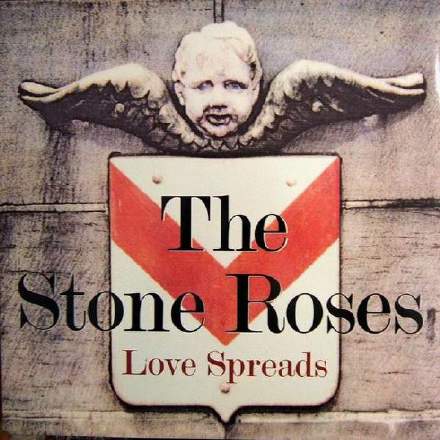
Given that fans had to wait more than five years for the band’s second album (for which this song was the lead single), I don’t imagine many of them batted an eyelid at waiting another 73 seconds for the vocals to come in here. But even I, who normally subscribes to a “don’t bore us, get to the chorus” attitude, was far from distressed by Ian Brown’s late arrival, as he’s one of those singers I’ve never managed to warm to. Partly it’s the monotonous delivery, partly it’s the persistently wayward tuning, and partly it’s the doubling treatments perma-slathered over his voice, perhaps in an attempt to draw a veil over those other weaknesses. And it doesn’t help in this case that the lyrics, arguably a saving grace, aren’t that easy to hear, because although all the stronger noise consonants (’t’, ’s’, ‘sh’, ‘ch’) come through well enough, there’s not enough high end in the rest of the vocal sound to bring out the subtler consonants (things like ’n’, ’m’, ’l’, ’th’), so lines like “I’m hiding in the trees with a picnic” at 1:29 or “They’re hurting her again” at 2:23 were impossible for me to decipher without the record sleeve in my hand.
Climbing off my own personal hobby horses, though, what initially struck me most from a mix perspective was how warm the bass-guitar timbre is when you hear it on its own (after “she’s my sister” at 3:01), and yet how it nonetheless cuts effortlessly through the mix, even on small speakers. A lot of rock engineers brighten the bass guitar to bring it out in the midrange, but here the secret to the bass’s clarity, as I see it, is the way its fundamental frequency and first overtone lionise the 70-200Hz zone. The envelope of the kick-drum is tightly controlled in that spectral region, so that doesn’t obscure the bass, and the guitars don’t compete much below about 120Hz either – as you can hear if I high-pass-filter a snippet of the track at that frequency. 120Hz HPF: play_arrow | get_app No HPF: play_arrow | get_app The bass guitar’s 100-200Hz region is high enough to register well on smaller speakers, but above 200Hz the instrument’s energy trails off rapidly (it all but disappears if I high-pass filter the mix at 250Hz, for instance), hence the subjectively warm tone. 250Hz HPF: play_arrow | get_app No HPF: play_arrow | get_app
Of course, John Squire’s guitar work here is great, but the engineer on the session, Simon Dawson, revealed no special tricks behind the sound when he was interviewed in Sound On Sound back in the day – just a Shure SM57 and a Sennheiser MD421 on the two speakers of a vintage Fender Twin amplifier. (That said, I was intrigued to hear on BBC Radio 4’s Last Word obituary podcast that pioneering radar engineer Richard Trim was apparently asked to set up some of his own vintage valve amps for the recording sessions. Whether they had anything to do with this guitar sound, though, was not divulged…) There are some neat moments in the guitar arrangement to enjoy, though, particularly the way the lyric “forgive you boy” is highlighted on its second iteration with a suddenly thinned guitar texture (at 2:11), and on its third iteration by a dramatic stereo-widened pitch fall-off (at 3:17). The octave-doubled fill at 2:26 is pretty cool too – a nice way of pulling that riff out of the texture for that moment with an ear-catching change in tone.
Another thing to admire about this mix is the comparatively roomy sound overall, and the way that gives a great sense of power and blend. Reading between the lines of that SOS article, I suspect that plenty of this production was overdubbed, so it’s a testament to the engineering work involved that the band sounds so cohesive and organic in the final mixed result. One potential contributing factor in this respect is that the band apparently both recorded and mixed the song at Rockfield studios, repurposing the recording rooms as reverb chambers at mixdown – I can imagine that this might well have helped give all the instruments more acoustic commonality. (It’s something I also associate with one of my favourite albums, Solomon Burke’s Don’t Give Up On Me’, where similar tactics were used by engineer Husky Hoskulds.)
Finally, my curiosity was also piqued by Dawson mentioning in that SOS piece that the band rarely used click tracks, so I spent a bit of time checking out how the tempo varied for different sections of the song. And what surprised me was that the tempo seemed to slow down a little through the track – the section at 1:13-2:00 is a little faster than the corresponding section at 3:12-3:59, for instance. Instinctively, I’d have expected a band to generally speed up gradually through the course of performing a song like this, seeing as it involves (in the most broad-brush terms) an overall build-up in intensity from start to finish. That said, it’s entirely possible that the drum tracks were edited together from a number of different takes, so I might be reading too much into it!










